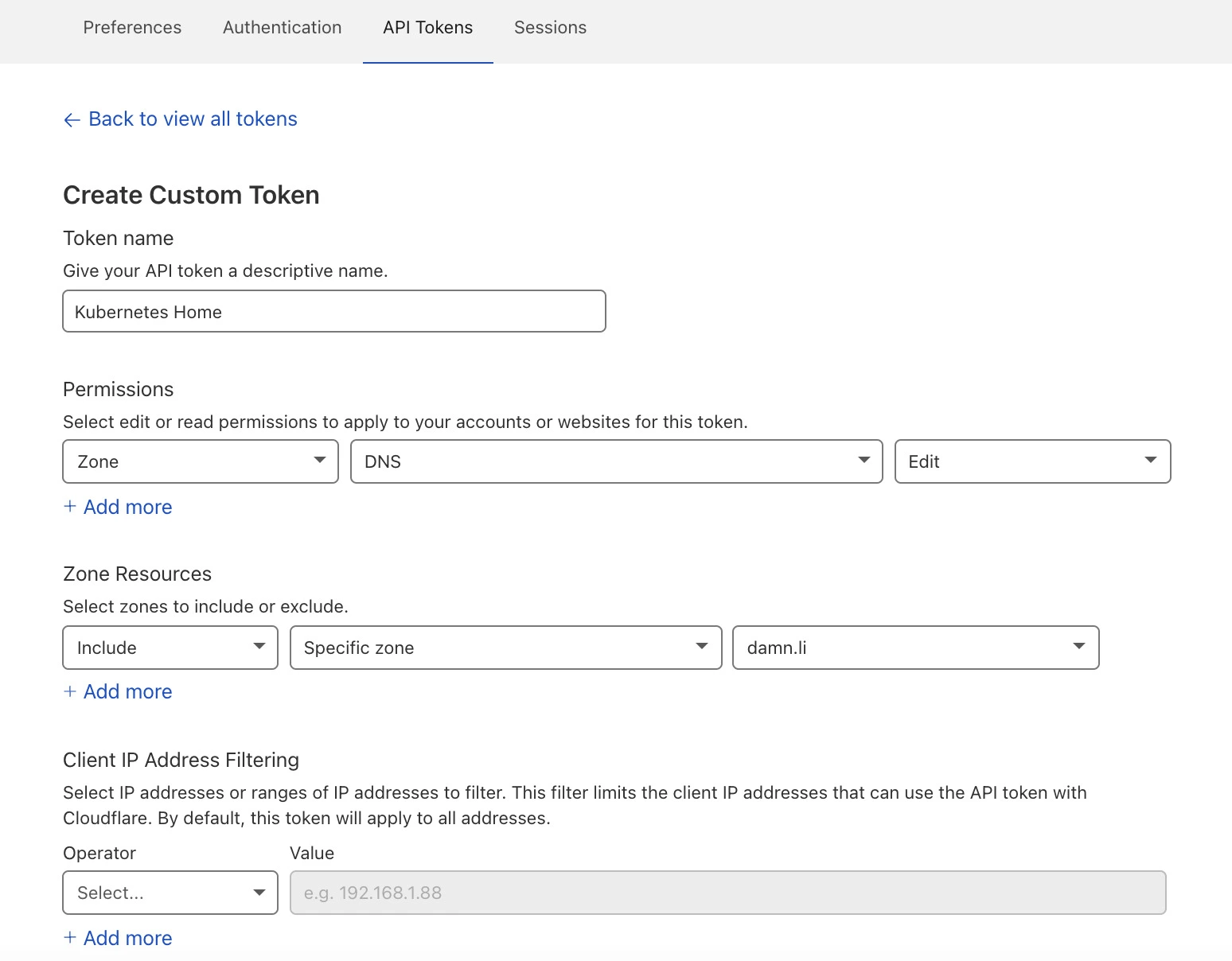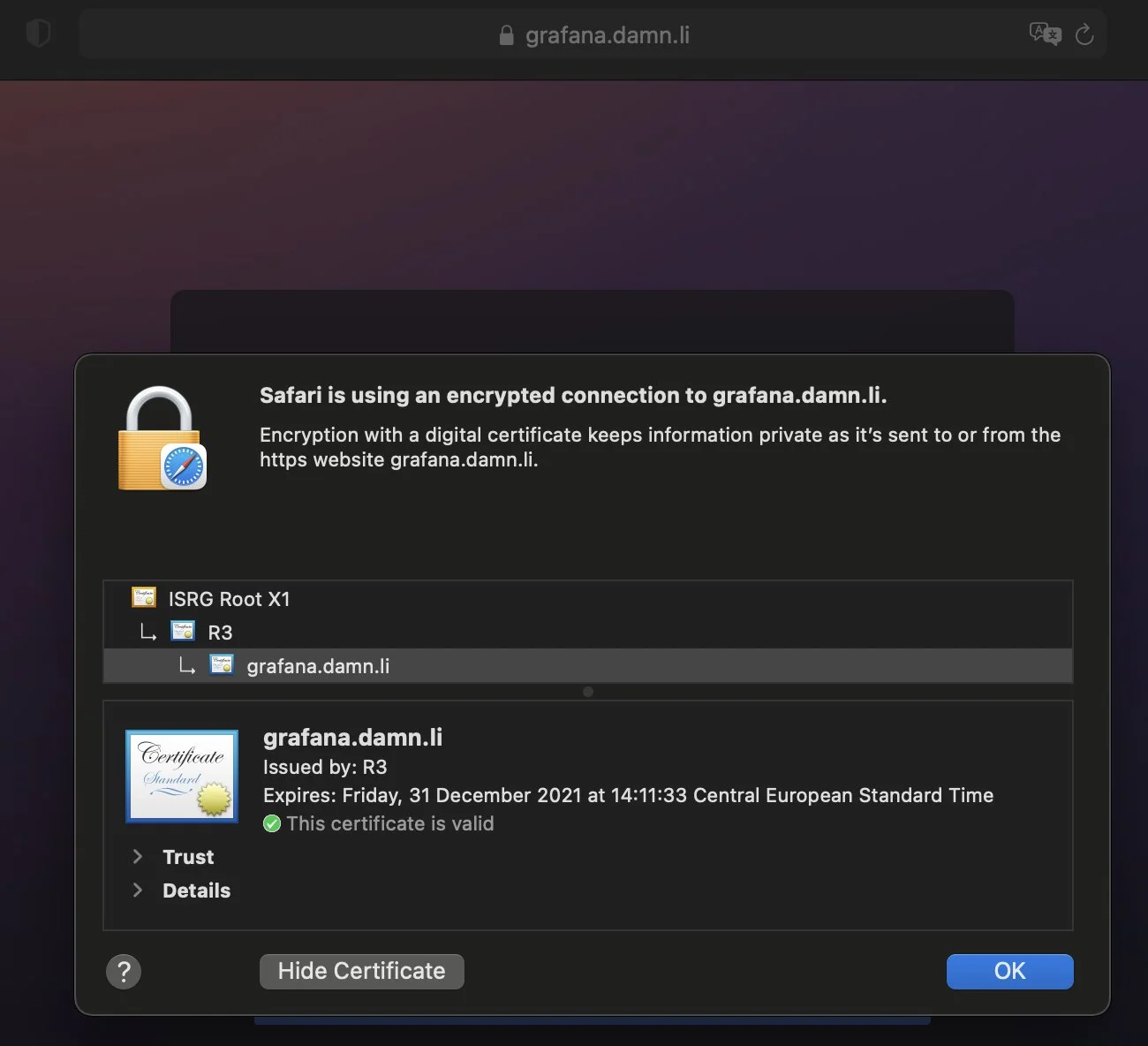Background
Not long ago I have decided to move all of my workloads running in my home lab to Kubernetes. I wanted to learn more about Kubernetes and even practice for the Certified Kubernetes Administrator (CKA) exam. So I deployed two Ubuntu Server 20.04 machines on top of my Esxi node. One for the master node and one for the worker node. Naturally I wanted to encrypt the access to the Kubernetes Ingress resources via trusted certificates instead of the default ones.
Let’s Encrypt
I am sure everyone working in the tech space has already heard something about Let’s Encrypt. It is a non-profit-organization issuing TLS certificates for free that are valid for 90 days. Let’s Encrypt lets you issue certificates via two different ACME challenges.
- HTTP-01
- DNS-01
As we will see later I am using the DNS-01 challenge because it allows me to issue certificates without creating a port forwarding rule in my internet router. Up to now, I have used certbot to issue certificates.
certbot -d damn.li --manual --preferred-challenges dns
However, for Kubernetes I wanted to go a different way where I issue the certificates directly on Kubernetes.
Cloudflare
I have been using different Cloudflare services for a few years. DNS is one of these services, and it is related to the DNS-01 challenge. Therefore, some API-Keys from the Cloudflare dashboard were required.

After obtaining the API-Keys, the only task left was storing the keys in a Kubernetes secret.
apiVersion: v1
kind: Secret
metadata:
name: cloudflare-api-token-secret
namespace: cert-manager
type: Opaque
stringData:
api-token: <API Token>
Applying the yaml files as always.
k apply -f secret.yaml
With this secret, Cert-Manager will be able to create the required DNS TXT record with a TTL of 2 minutes in Cloudflare.
Cert-Manager
While doing some research on what is the best approach to issue certificates on Kubernetes, I came across Cert-Manager, and it seemed the right way to go. Cert-Manager supports different sources like HashiCorp Vault, Let’s Encrypt, Venafi and private PKI. I went ahead, installing Cert-Manager via Helm.
helm repo add jetstack https://charts.jetstack.io
helm repo update
helm install \
cert-manager jetstack/cert-manager \
--namespace cert-manager \
--create-namespace \
--version v1.5.4 \
--set installCRDs=true
Now it was time to create the ClusterIssuer. Note: With Issuer, you can create issuers that are tied to a specific Kubernetes namespace.
apiVersion: cert-manager.io/v1
kind: ClusterIssuer
metadata:
name: letsencrypt-prod
namespace: cert-manager
spec:
acme:
email: <email>
server: https://acme-v02.api.letsencrypt.org/directory
privateKeySecretRef:
# Secret resource that will be used to store the account's private key.
name: le-issuer-acct-key
solvers:
- dns01:
cloudflare:
email: <email>
apiTokenSecretRef:
name: cloudflare-api-token-secret
key: api-token
selector:
dnsZones:
- "damn.li"
- "*.damn.li"
Creating the ClusterIssuer was only half of the story because what I wanted were certificates.
apiVersion: cert-manager.io/v1
kind: Certificate
metadata:
name: le-grafana-damn-li
namespace: monitoring
spec:
secretName: le-grafana-damn-li
issuerRef:
name: letsencrypt-prod
kind: ClusterIssuer
commonName: "grafana.damn.li"
dnsNames:
- "grafana.damn.li"
Note the reference to the ClusterIssuer. Also adjust the commonName and dnsName according to your domain.
Applying the yaml file as always.
k apply -f ClusterIssuer.yaml
k apply -f CertificateGrafana.yaml
Nginx Ingress Resources
The only step left was telling the Nginx Ingress Resource for Grafana to use the issued certificate instead of the default one.
ingress:
---
tls:
- hosts:
- grafana.damn.li
secretName: le-grafana-damn-li
Final check
A final check and it worked.

